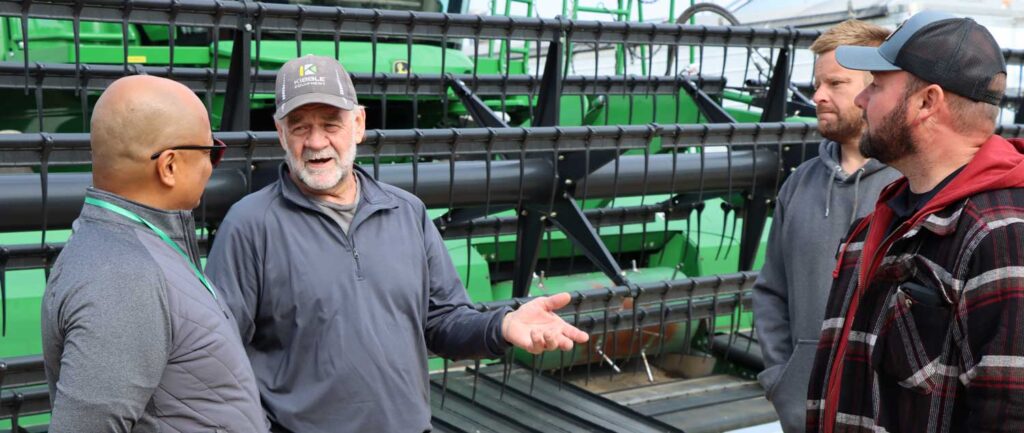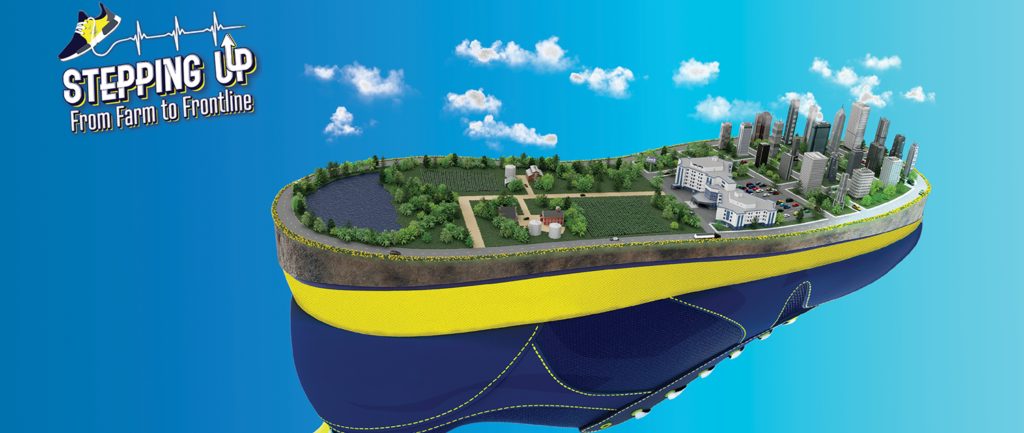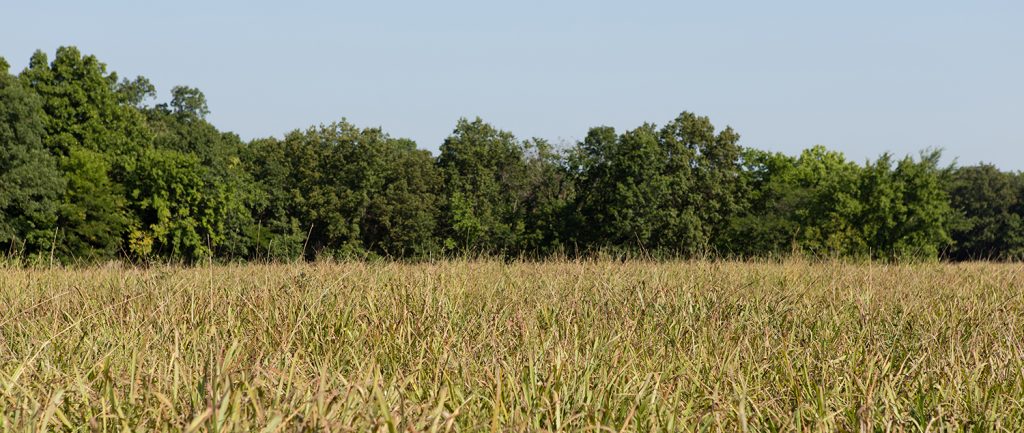Faribault County farmer Andy Linder knows that when it comes to making changes to farm management methods, the toughest obstacle to overcome often lies between the ears. It took several years of attending meetings, talking to other farmers and even watching YouTube videos before Linder started adding cover crops to his farm mix.
Linder farms land near Easton and Blue Earth, raising an equal mix of corn, soybeans and small grains. He started using cover crops in 2014 and hasn’t looked back. Since 2017, every acre he farms includes cover crops.
“I like having root and soil activity before corn and soybeans and the cover crops provide that,” Linder says. “There’s usually about two months in the spring and a month in the fall when corn and soybeans aren’t doing anything.”
Linder’s staple cover crop mix includes cereal rye, winter triticale, oats, kale, radishes, turnips and a variety of legumes and warm season grasses. Having living roots in the soil during the entire growing season helps Linder improve overall soil health by increasing soil organic matter, reducing erosion and improving soil water infiltration.
A different approach
Cover crops are typically planted in the fall following cash crops. For Linder, the small grain’s shorter growing season allows him to get cover crops established before winter. Cover crop blends are sometimes seeded into standing crops. Once those cash crops are harvested, cover crops take advantage of the late season weather to grow and get established before winter. The cover crops resume growing in the spring. They’re typically terminated just before farmers seed directly into the standing plants.
Linder says he’s blessed to have soils with high organic matter levels, making significant gains more difficult to achieve. But he is seeing improvement in some of his trouble areas like sandy side hills or clay knobs.
“I do think my stressed spots are getting smaller and showing up later,” he says.
The biggest benefit Linder has seen comes in reduced soil erosion and decreased weed pressure. Cover crops tend to crowd out weeds, which has allowed Linder to change his herbicide management plan and save money.
“I like what I’m seeing initially, but I’m hoping to get to where some of the veteran farmers are,” Linder says. “There are some short-term gains, but we have to be in it for the long haul. I’ll be doing cover crops on every acre, every year.”
Martin County farmer Rochelle Krusemark kicked around the idea of cover crops for three years before taking the plunge. She and her husband, Brad, also raise beef cattle, which added another layer to the cover crop consideration.
“We started using cover crops to feed the cows,” says Krusemark, a director with the Minnesota Soybean Research & Promotion Council. “With a diversified operation like ours, we’re able to get additional benefits by using the cover crops as feed.”
The Krusemarks plant cover crops in the fall, then chop and bag them for cattle feed in the spring. The forage was a nice addition, but Krusemark says cover crops are also helping them improve soil health. The cover crops take up nitrogen and keep it from leaching. She has also reported improved weed control.
“It takes a little more management, but every time we turn around, we get another ‘wow’ moment,” she says.
Testing covers
University of Minnesota Assistant Professor for Sustainable Cropping Systems Axel Garcia y Garcia says interest in cover crops among Minnesota farmers is slowly increasing.
“Benefits of cover crops are well known,” Garcia y Garcia says. “The most compelling are reduction of soil erosion and better nutrient cycling. Over time, cover crops will suppress weed growth, reduce compaction and improve soil structure. They also reduce nitrate-nitrogen leaching. Ultimately, all those benefits will enhance soil health or the continued capacity of soil to function properly.”
Garcia y Garcia says the University has numerous cover crop research projects that focus on the integration of cover crops in the corn-soybean rotation. Research is examining the agronomic, environmental, and economic aspects of cover crops. Studies includes timing for seeding and termination, biomass production, nitrogen use, water use, nitrogen transfer, ground coverage and the potential for reduction in nitrate-nitrogen loss.
Cover crops do increase the amount of management that’s required of farmers. It can also take some trial and error to get the right crop mix and determine the best timing for planting and terminating. That can be a challenge because every growing season presents new challenges. Those are among the reasons farmers are reluctant to try cover crops.
“I think cost is the biggest factor right now,” says Gregg Johnson, associate professor at the University of Minnesota Southern Research and Outreach Center in Waseca. “Farmers are also concerned with how cover crop use may interfere with their overall operation. They can be limited on weed control options, for example, especially when trying to control late emerging weeds such as waterhemp.”
Despite the challenges that come with adjusting their practices, Linder and Krusemark are both in it for the long haul. They’ll continue tweaking their approach because so far, the benefits outweigh the additional management.
“We always ask if things are going to work on our farm, and so far, it’s working,” Krusemark says. “Healthy soil makes healthy plants.”







